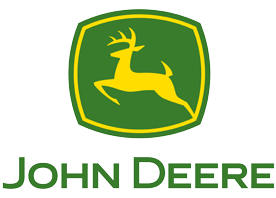Labor availability is currently the most significant challenge facing the wine and grape industry. Vineyard owners who used to rely on experienced farm workers to return for grape picking season year after year have been negatively impacted by the many challenges facing the labor market. The inability to secure experienced laborers has forced grape growers to consider new strategies and options for getting grapes off the vine at harvest time.
The Current Challenges Facing the Industry
One of the primary challenges facing the wine industry is that unlike other businesses that use day laborers, vineyards need to hire a lot of workers all at once during a very short and inflexible window of time. Paired with rising minimum wage requirements, the lack of local knowledgeable pickers, and the complicated process to hire temporary workers though the H-2A Visa Program, vineyard owners are struggling to secure enough qualified labor for grape picking season.
Even vineyards that can secure enough labor for harvest season are struggling to make ends meet. Labor costs are rising steadily as land owners compete for the limited pool of farm laborers all needed during the same short windows of time when fruit is at its peak.
Seasonal Labor Alternatives
Some vineyard owners in the Pacific Northwest have gone to the extent of hiring more year-round help just to ensure they will have enough hands for harvest, while others are turning to the latest technology and grape harvesting equipment as an alternative.
The largest share of the Pacific Northwest’s wine grape crop is still harvested by hand, but grape harvesting equipment is growing in popularity and for good reason. The equipment has come a long way since the 1960s when grape harvesters were first introduced. Brands, like Pellenc, have come out with new technology that enables harvesters to perform more delicate tasks, typically relegated to the hand picking process.
Pellenc Equipment Revolutionizes the Industry
Pellenc’s skeptics worry that machine harvesting will result in an excessive degree of crushing and too much MOG (material other than grapes) ending up in the bin but the opposite is true.
The latest Pellenc Selectiv’ Process technology has changed the way winemakers view machine-harvested fruit and produces a harvest that is actually cleaner than hand harvesting.
How It Works
- De-Stem - The high-frequency linear destemmer on the Pellenc grape harvester is designed to gently destem the grapes while keeping the remaining stems intact. The Easy Touch console allows the operator to adjust the frequency and release settings with a single click right from the cab.
- Sort - After destemming, harvested fruit is then passed to the screen rollers where small waste and route petioles are separated, and the grapes are gently passed to the storage bin.
Independent tests completed by the French Vine and Wine Institute found that 99.82% of the grapes in the bin were perfect. Unlike hand-picked grapes, no secondary sorting is required. The grapes in the bin can be added directly to the vat.
The efficiency of the equipment, the quality of the grapes that are delivered to the winery after being harvested by Pellenc equipment, and the vast reduction in labor costs are undeniable. “Depending upon the size of the vineyard, you can reduce the size of your labor force from 40-50 people to three or four by adopting mechanical harvesting,” said John Felice of Pellenc America, Inc. Grape harvesting equipment is solving the problems vineyards are facing all over the world and ultimately changing the industry.
More Than Just Grape Harvesters
“The other significant factor to consider is the efficiency and cost savings associated with owning machines that can work for multiple applications in the vineyard, helping the bottom line,” said Carl Laux, Corporate Product Specialist at Papé Machinery Agriculture & Turf.
The Pellenc Multiviti, for example, allows operators to attach all Pellenc vineyard tools to just one chassis to quickly and easily access functions including pre-pruning, pruning, trellising, leaf stripping, and topping. The ability to do all those functions with just one machine offers incredible cost savings compared to having multiple machines or paying for manual labor.
“One of the most important objectives with mechanizing the vineyard is “timing,” the machinery allows our customers to be able to prepare the processes that need to be done throughout the year, in advance, without relying on manual labor,” added Laux.
Vineyard Management & Harvester Considerations
Most vineyards would benefit from mechanizing, but not all. Small operations, vines planted on steep slopes, or rows planted less than five feet apart generally aren’t good candidates. The cost/benefit analysis should be calculated based on your specific acreage, your average annual labor cost, and the price of the equipment you are interested in.
There are a variety of model options to consider depending on your specific needs. If you already have a tractor, for example, the tow-behind harvester offers the same picking quality at approximately a 50% savings compared to the self-propelled model.
The equipment experts at Papé Machinery Agriculture & Turf would be happy to help you calculate the cost/benefit analysis for your vineyard before the next grape picking season. Contact us today to get a quote on any of our Pellenc grape harvesters for sale and learn about our flexible financing options for vineyard management equipment.









